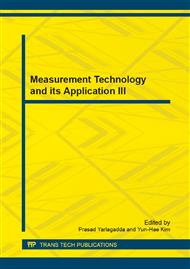p.1016
p.1020
p.1026
p.1031
p.1036
p.1041
p.1045
p.1049
p.1054
Research on the Real-Time Model of Aero-Engine Actuator
Abstract:
Since the solving process of hydraulic dynamic simulation is complex and computational ineffectiveness,the aero-engine actuators real-time modeling is presented in this paper. Combined with the precise model, the convergence of the model and flow coefficient is analyzed. The real-time model operates a number of solving processes in one 20ms simulation cycle and the convergence of fix-step algorithm is guaranteed by adjusting the relevant parameters. The simulation shows that the real-time model can improve the computational efficiency with satisfactory real-time performance and precision.
Info:
Periodical:
Pages:
1036-1040
Citation:
Online since:
June 2014
Authors:
Keywords:
Price:
Сopyright:
© 2014 Trans Tech Publications Ltd. All Rights Reserved
Share:
Citation:


